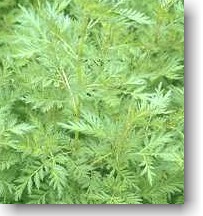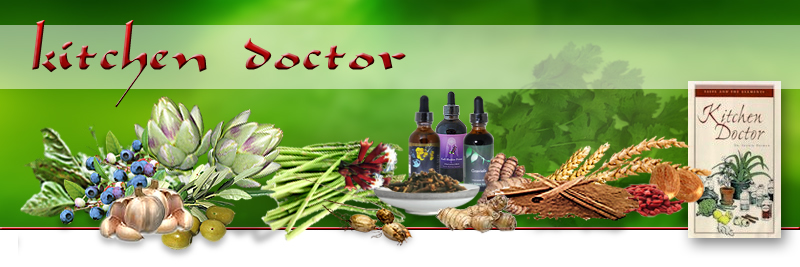Index to Pages on Herbs
 Artemisia Annua Artemisia Annua
 Sweet Annie is the preferred herb for treating malaria as well as a number of other parasitic conditions. It has a long history in traditional Chinese medicine and is presently cultivated in Africa and Asia for medicinal use. It has also been found effective in treating certain types of cancer. Sweet Annie is the preferred herb for treating malaria as well as a number of other parasitic conditions. It has a long history in traditional Chinese medicine and is presently cultivated in Africa and Asia for medicinal use. It has also been found effective in treating certain types of cancer.
 Black
Cumin Seeds Black
Cumin Seeds
Black cumin is regarded by many as a panacea
and may therefore not be taken seriously by some, but for those
inclined to dismiss folklore, it should be noted that these humble
seeds have been found superior to almost every other natural
remedy when used for autoimmune disorders, conditions in which
patients suffer greatly because their own systems attack their
bodies.
 Black Walnut Black Walnut
The doctrine of signatures
refers to the similarity between the walnut and the head: the outer
husk of green covering represents the pericranium . . . ergo "salt
made of those husks or barks are good for wounds of the head." The
inner woody shell resembles the skull and the little yellow peel
(inside the walnut) corresponds to the meninga and pia-mater. The
kernel has the same appearance as the brain and is therefore "profitable
to the brain and resists poisons."
 Cilantro Cilantro
A researcher named Dr.
Yoshiaki Omura discovered
that some patients excreted more toxic metals after consuming a
Chinese soup containing cilantro, the leafy part of coriander,
an herb whose seed is a familiar culinary spice in African, Middle
Eastern, and Indian cooking.
 Codonopsis Codonopsis
Codonopsis is a bit sweet, especially if soaked in water before use. It is rich in saponins and has a capacity to penetrate and cleanse tissues. It is considered particularly beneficial to the lungs, spleen, and stomach. Research shows that it reduces blood pressure and increases immunity and hemoglobin. It is an adaptogen and supports the adrenals.
 Galangal Galangal
Galangal, the favorite herb of Hildegard of Bingen, is a member of the ginger family. It has
antifungal and antibacterial properties that have been found
effective in treatment of candida albicans. Hildegard of Bingen recommended it for deafness as well as heart problems.
 Goji Berries Goji Berries
The now quite famous berries from Mongolia are a very rich source of vitamin C,
having 500 times more vitamin C per ounce than oranges, actually
more almost than any fruit you could name. They are also
a superb source of vitamin A, not surprising because they
are a really pretty red color. Goji berries also have vitamins
B1, B2, B6, and E; they are becoming a famous antioxidant.
 Lavender Lavender
Lavender can be applied to open wounds
as a protection against infection and as a treatment once infection
is evident as with gangrene. It is useful for dog bites and other
lacerations and can also be used for acne, psoriasis, fungal conditions,
herpes, burns, scalds, and sunburn.
 St. John's Wort St. John's Wort
St. John's wort is prized
as a nervine and antidepressant, so much so that in Germany, where
St. John's wort is approved for treatment of depression and anxiety,
it is prescribed 20 times more often than Prozac.

 Annona muricata Annona muricata
In an 1976 plant screening program by the National Cancer Institute, graviola leaves and stem showed active cytotoxicity against cancer cells and researchers have been following up on these findings since. Much of the cancer research on graviola focuses on a novel set of phyto-chemicals called Annonaceous acetogenins. Graviola produces these natural compounds in its leaf and stem, bark, and fruit seeds.
 Artemisia annua Artemisia annua
Two bioengineering research professors at the University of Washington have rediscovered wormwood as a promising potential treatment for cancer among the ancient arts of Chinese folk medicine.
 Hydrastis canadensis Hydrastis canadensis
The use of goldenseal was taught to early American colonists by Cherokee medicine men and women. It was used in many cancer treatments by such successful physicians as John Pattison whose work is discussed in Ingrid Naiman's book, Cancer Salves: A Botanical Approach to Treatment.
 Sanguinaria Canadensis, part I Sanguinaria Canadensis, part I
The medicinal uses of bloodroot were learned from Native Americans living in the region of Lake Superior as well as the Cherokee further to the south. Bloodroot was prized for its root sap, an interesting exudate that remarkably resembles blood. The roots, usually used fresh, are made into washes, poultices, snuffs, dental powders, and escharotic salves.
 Sanguinaria Canadensis, part II Sanguinaria Canadensis, part II
Tis Mal Crow says the plant comes in two colors, salmon (male) and crimson (female.) To determine the sex of the plant, you tear the leaf. It will bleed salmon or crimson and one is to match the plant to the gender of the patient.
 Viscum album Viscum album
Mistletoe preparations show cytotoxic properties in vitro and to some degree in vivo. It has also shown to stimulate the immune system response through an increased number of white blood cells. Both of these properties have made mistletoe a candidate for cancer and AIDS remedy research. |

Bloodroot
Burdock
Edible Flowers
Figwort
Mint

Baikal Skullcap
Scutellaria baicalensis
Bhringaraj
Eclipta alba
Comfrey
Symphytum officinalis
Fenugreek
Trigonella foenum-graecum
Rosemary
Rosmarinus officinalis
St. John's Wort
Hypericum perforatum - L.
Siberian Catmint
Nepeta sibirica
Vitex
Vitex agnus-castus
Wormwood
Artemisia absinthium |

Sacred Medicine Sanctuary
Poulsbo, Washington 98370
Copyright by Sacred Medicine Sanctuary 2004, 2007, 2009, 2011, 2014, 2017
 Contact Us || Sacred Medicine Sanctuary & FAQ || Subscription Management Contact Us || Sacred Medicine Sanctuary & FAQ || Subscription Management
|



